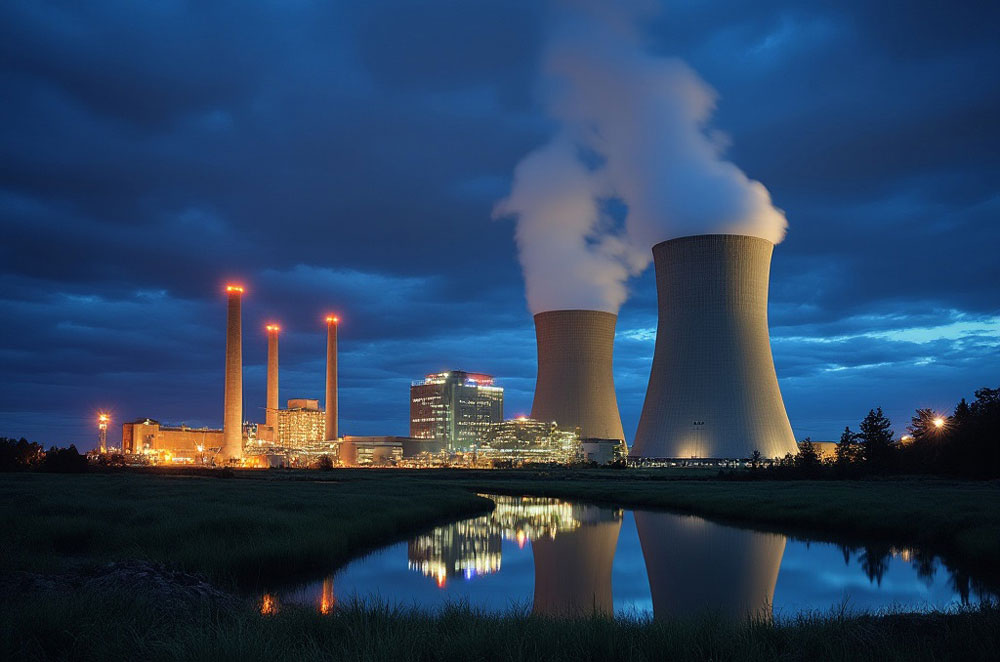India’s largest state power producer, NTPC, has announced a groundbreaking plan to build 30 gigawatts (GW) of nuclear power capacity over the next two decades at an estimated cost of $62 billion, according to sources familiar with the matter. This ambitious move represents a threefold increase from the company’s original target of 10 GW and aligns with India’s broader commitment to transitioning to cleaner energy sources.
NTPC’s Role in India’s Nuclear Energy Vision
NTPC, traditionally known for its coal-fired power plants, intends to play a leading role in India’s nuclear power sector, mirroring its dominance in the thermal power industry. “NTPC plans to lead India’s nuclear power plan just as it did in the thermal sector,” one source stated. The company is currently in the process of identifying promising sites across eight states, including Gujarat, Uttar Pradesh, Madhya Pradesh, Andhra Pradesh, and Tamil Nadu, to facilitate capacity expansion. These locations hold the potential to support at least 50 GW of nuclear capacity.
The initiative comes following the Indian government’s recent decision to open the nuclear energy sector to foreign and private investments, a move that has sparked interest from major Indian conglomerates such as Tata Power, Adani Power, Vedanta, and Reliance Industries.
India’s Nuclear Ambitions
India has set an ambitious target of achieving 500 GW of non-fossil fuel electricity generation capacity by 2030 and aims to reach 100 GW of nuclear capacity by 2047. Currently, the state-run Nuclear Power Corporation of India Limited (NPCIL) operates nearly 8 GW of nuclear capacity, with plans to increase this to 20 GW by 2032. NTPC’s expansion plans will significantly contribute to these national goals.
As part of its nuclear initiative, NTPC is already collaborating with NPCIL on two 2.6 GW nuclear plants in Madhya Pradesh and Rajasthan. The company is also negotiating partnerships with international firms to develop small modular reactors (SMRs). Potential collaborators include France’s EDF, Russia, and U.S.-based companies such as General Electric and Holtec International.
EDF has expressed its willingness to work on SMR projects in India, while NTPC has also sought early-stage approvals for land acquisition, a critical step given the public resistance and logistical challenges that have historically hindered India’s nuclear energy projects.
Regulatory Reforms to Boost Nuclear Sector
India’s nuclear power sector has long been constrained by stringent regulations under the Atomic Energy Act of 1962, which prohibits private investments in nuclear power plants. Additionally, the Civil Liability for Nuclear Damage Act, 2010, has deterred foreign companies from entering the market due to heavy liability clauses.
However, the Indian government, under Prime Minister Narendra Modi, has proposed amendments to these laws to create a more favorable environment for private and foreign investments. Finance Minister Nirmala Sitharaman has also pledged $2.3 billion for the research and development of small modular reactors, with plans for at least five SMRs to become operational by 2033.
Global Collaboration and Strategic Partnerships
Prime Minister Modi’s recent visits to the United States and France have underscored India’s commitment to leveraging international expertise to advance its nuclear energy goals. During these visits, Modi highlighted plans to collaborate with both countries to expand India’s nuclear capabilities. Such partnerships are expected to accelerate the development of advanced nuclear technologies and ensure a steady supply of fuel and equipment.
Challenges and Opportunities
The success of NTPC’s nuclear expansion hinges on overcoming several challenges, including land acquisition issues, public opposition, and the financial and logistical complexities of large-scale nuclear projects. However, the government’s policy reforms and NTPC’s strategic approach to partnerships and site selection provide a strong foundation for success.
The ambitious plan is not just a leap forward for NTPC but also a significant step toward diversifying India’s energy mix, reducing its reliance on fossil fuels, and meeting its climate goals. If successfully implemented, this initiative could position India as a global leader in nuclear energy and serve as a model for other nations transitioning to cleaner energy sources.











